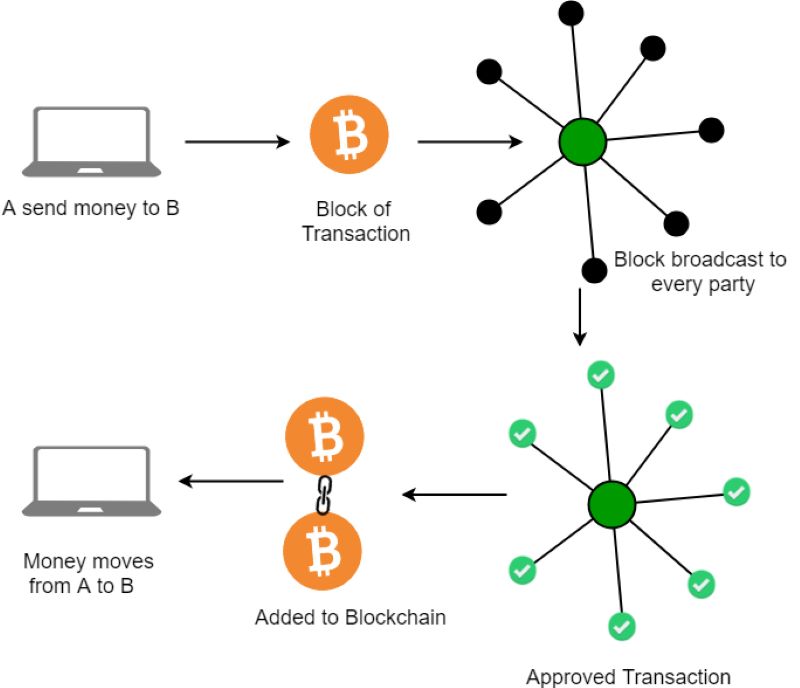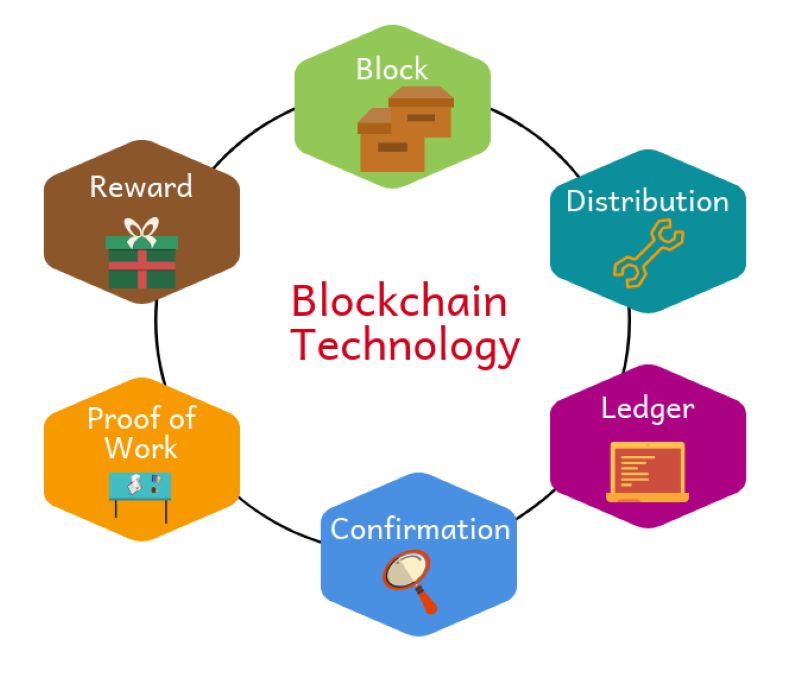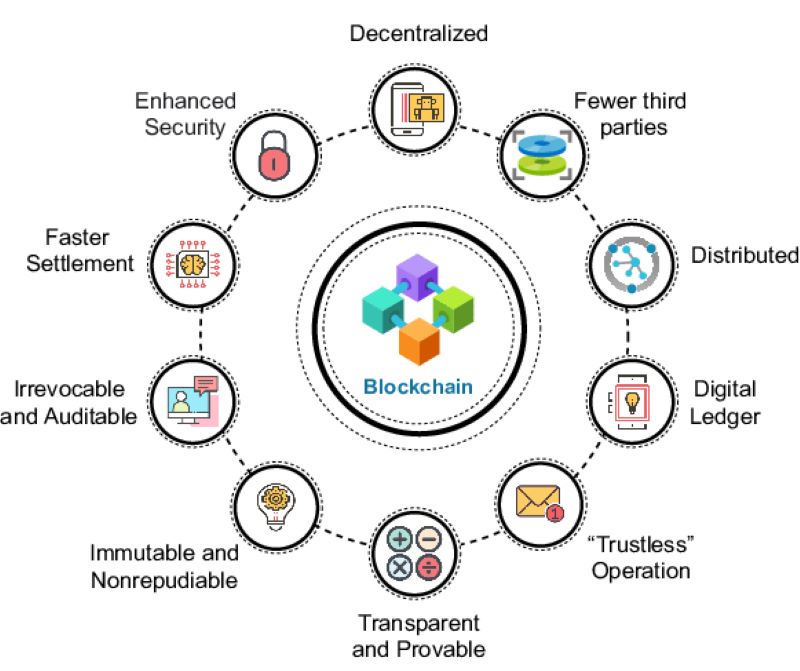Unraveling Blockchain: Is It Really As Complex As It Seems?
Ever wondered, How complex is blockchain technology? I’m here to guide you through its twists and turns. Imagine blockchain as a puzzle. Pieces connect to reveal a big picture. We start with the basics, like building blocks kids play with. But there’s more. How does it stay safe? How does it agree on what’s true? I’ll take you behind the scenes. We’ll dig into operations and security, peek at the gear that keeps the whole machine running smooth. Prepare to dive deep into the nuts and bolts of this tech marvel, all while keeping it simple. Let’s demystify blockchain together.
Demystifying the Foundation of Blockchain Technology
Blockchain Fundamentals Explained
Blockchain seems tricky at first glance, but let me break it down. A blockchain is like a digital book of records. Imagine you have a book. Every new page in that book is a list of what people did, like buying or trading things. Once a page is full, you add a new one. But, unlike a regular book, you can’t just rip a page out. Everyone has a copy of this book, so they’d all know.
Now, let’s talk about nodes, which are like helpers in the system. Each helper keeps a copy of this book. They all work together to check new pages. They make sure everything is correct before adding them to the book. This way, no one cheats, and the records stay safe.
Blockchain can be private or public. Public means anyone can write in the book. They can also help check the pages. But private blockchains are different. Only certain people can write and check pages here.
The bookkeepers decide on new pages by a process called ‘consensus mechanisms’. This is how they agree on what gets added to the book. Some popular ways are proof of work, where helpers solve hard puzzles. Another way is proof of stake, where the more you own, the more say you have.
Then, there’s something called smart contracts. These are like promises written into code. They automatically do things when certain conditions are met.
So, is blockchain complex? It can be, but it’s not too hard to understand the basics. Once you get them, the rest starts to make sense step by step.
Understanding Blockchain Architecture
The architecture is how all the parts of blockchain fit together. It’s designed to be safe and work without needing one person in charge. Every part has a role that makes sure everything runs smooth.
In a blockchain, all transactions go into blocks. Then, they get a special code called a cryptographic hash. This is like a unique name for the block. It also connects to the code of the block before it. This link is what makes a chain – a blockchain.
Blocks are made and added to the chain by special computers called miners. They race to solve a puzzle first. The winner gets to add the block and gets a reward.
Also, there are layers to these systems. The base, layer 1, is the main blockchain. But sometimes, it struggles with lots of traffic. So, we have layer 2 solutions. They work on top of the base, helping to deal with more users and transactions.
Blockchain has lots of potential, yet it faces challenges like being able to handle many users at once, called scalability. And it needs to work well with other systems, known as interoperability.
In all, blockchain builds safe and open ways for people to make and keep records of deals and promises. It’s growing and changing, just like all technology does. And as it grows, we’re learning how to use it better and make it work for all of us.
Understanding blockchain means starting with its basics and building your knowledge from there. It’s a bit like learning a new language; tricky at first, but with time, it becomes a lot clearer.
Behind the Scenes: Operations and Security
Principles of Blockchain Operation
Understanding blockchain feels like unraveling a tough knot at first. But once you get the hang of the basics, it’s a lot like a game that follows specific rules. Fundamentally, blockchain is a chain of blocks – but not in the traditional sense. Here, ‘blocks’ are digital pieces of data and ‘chain’ is the public database where they connect. Now, imagine this chain as a shared laundry line. Each piece of clothing is a block of data that everyone can see, but cannot alter once it’s pinned.
In the blockchain, when someone makes a transaction, it must be approved before hanging on the line. This is where the magic of blockchain nodes comes into play. Nodes are like watchful neighbors, making sure everyone plays fair. They check and confirm transactions, keeping the game safe for all. To get more techy, each block has its unique code called a hash. If someone tries to mess with a block, its hash changes, and the nodes notice it straight away. This system keeps the blockchain accurate and hard to hack.
This is how the decentralized ledger thrives. It allows us to see all the transactions of the past. This transparency is key in blockchain’s trust factor. And for decisions, there is no sole boss. Each node has a say, which is why we call it a democratic system.
Blockchain Cryptography Basics
Now, let’s dive into the secret sauce of blockchain – cryptography. It’s like a special lock and key for your digital stuff. It uses complex math to keep your transactions secure. When you create a transaction, you sign it with a digital signature, which is your private key. This key is secret to you, like the PIN for your debit card. It’s what you use to say ‘yes, this is really me!’
Every time you sign off on a transaction, a mathematical puzzle is created. Miners, who are like puzzle enthusiasts, solve these puzzles using powerful computers. This process is part of what we call ‘proof of work’. It’s how new blocks are added to the blockchain. Think of it as getting a stamp of approval for your transaction.
Another type of lock-and-key system in blockchain is ‘proof of stake’. Instead of puzzle solvers, you have validators. These are people who lock up some of their coins as a promise to play fair. If they approve a sketchy transaction, they lose their coins. This method uses less energy and is like putting down a deposit to ensure trust.
As you see, blockchain might sound complex with its layers of checks and locks. But at its core, it’s built on simple principles that create a secure and open way of swapping and tracking data. From finance to supply chains, it’s designed to be tamper-evident and straightforward for those who take the time to learn the ropes. Whether it’s securing a digital vote or tracking a shipment of apples, the underlying operations of blockchain make it a powerful tool for a transparent digital age.
Advanced Mechanics of Blockchain Systems
Consensus Mechanisms in Blockchain
You might wonder, “How do all the computers in a blockchain agree?” They use rules called consensus mechanisms. These are like the secret sauce that makes all the parts work as one. Every member has to follow these rules to add new info. Without them, blockchains would be like wild horses without a cowboy – pure chaos!
Consensus mechanisms come in different flavors. You’ve maybe heard of Proof of Work (PoW) or Proof of Stake (PoS). They sound complex, but think of PoW like a bunch of miners digging for gold. It’s hard work and the first to find gold wins a prize. Meanwhile, PoS can be like a game where the more coins you hold, the bigger your voice in deciding what’s good for everyone. Both are vital for a fair and safe blockchain.
Decentralized Ledger Intricacies
Now, let’s explore what keeps your transactions safe: the ledger. It’s not like any book you’d write in. This ledger is spread far and wide, on many computers. No one owns it alone which is why we call it decentralized. Imagine having a toy, but instead of one friend keeping it, hundred friends hold a piece. It’s harder to lose or break it, right?
Every transaction gets checked and locked tight by cryptography. It’s like a secret code that only special keys can open. Every deal you do is linked to the one before it. This link is what we call a blockchain!
Nodes are the computers that store bits of this chain. They talk to each other, checking and saving new info. Nodes are like the eyes and ears of the blockchain, always watching, always listening. They keep everything on track.
So, what does all this mean for us? Blockchains help with more than just money. They can handle deals, keep records, and even track stuff we buy like toys or bananas! As we race on towards the future filled with cool tech, understanding these mechanics helps us imagine new ways to use this nifty tool.
And that’s the story of how blockchains work! From rules that make sure everyone plays fair to the sturdy ledgers that keep our stuff safe, blockchain technology is indeed intricate but not too complex to grasp. Keep asking questions, keep learning, and soon you’ll uncover even more about what makes blockchains tick.
Blockchain Challenges and Its Evolution
Scalability Issues in Blockchain
Scalability is a hot topic in the blockchain world. It’s a big challenge. The main issue is this: as more people use a blockchain, it gets slower. It’s like a road that jams as it gets more cars.
Blockchains use nodes, computers that hold copies of digital ledgers. Nodes check and agree on transactions. This is both secure and a bit slow. When lots of transactions happen, the blockchain can slow down.
A known fix is to make blocks bigger. This lets each block hold more data, so more transactions fit in. Think of it as making a wider road for more cars.
But this is not the perfect answer. Bigger blocks can mean fewer nodes, because it costs more to run them. Fewer nodes can mean less security and that goes against what blockchains stand for.
Another idea is to use many chains. It’s called sharding. Sharding splits the blockchain into smaller pieces. It’s like having many small roads instead of one big road.
Sharding can be complex. It needs careful work to get it right. If done well, it keeps things fast and still secure.
We’re also seeing layer 1 and layer 2 solutions. Layer 1 changes the main blockchain to fix issues. Layer 2 adds a new layer for faster transactions.
The Future of Blockchain Evolution
Looking ahead, blockchains will keep changing. They must be quick, secure, and work with many users. We must also think of new ways to settle transactions and start using “proof of stake”. It’s a method that uses less power than “proof of work”.
Smart contracts will get better too. They’re like a set of rules that run by themselves. They’ll become easier to use and more folks will start using them.
And there’s quantum computing. It’s a new way of processing that could one day crack blockchain security. But, clever minds are working on ways to keep it safe.
Blockchains are also getting better at talking to each other. That’s known as interoperability. It means different blockchains can work together smoothly. It’s like phones from different brands that can still call each other.
Node networks will get stronger and lend more power to blockchains. As all parts get better, blockchains will be ready for even more uses. This could include handling our money or tracking items from start to finish.
The road ahead will have twists and turns. But it’s sure to be exciting. As we learn and grow, blockchain will too. It’s a journey to make it easy for everyone to use. And as I see it, the future of blockchain is bright. It will keep evolving, solving today’s problems tomorrow.
So, while blockchain might seem complex, with every challenge comes a chance to improve. With hard work and smart ideas, a world built on blockchains could be just around the corner.
We dove deep into blockchain basics, architecture, and operations. We learned how blockchain works and keeps data safe. I shared insights on consensus mechanisms and ledgers that are key to blockchain’s power.
We also tackled the tough parts. Scalability can be a big hurdle for blockchain, but smart minds are working on fixes. What’s next for blockchain? More speed, and new uses – that’s for sure.
Blockchain’s not just a buzzword; it’s a tech revolution with lots of growth ahead. Keep an eye on it, and remember, understanding blockchain today is a step towards the innovations of tomorrow.
Q&A :
How does blockchain technology work?
Blockchain technology is a decentralized system where transactions are recorded on multiple computers in a chain of blocks. Each block contains a list of transactions and is connected to the previous block, making the chain secure and difficult to tamper with. Participants use consensus mechanisms like proof of work or proof of stake to validate transactions and create new blocks.
What makes blockchain technology so secure?
Blockchain’s security comes from its decentralization, cryptographic hashing, and consensus mechanisms. Each block contains a unique cryptographic hash of the previous block, creating an unbreakable chain of secure data blocks. Furthermore, since the ledger is distributed across a network of computers, altering recorded data would require consensus from the majority of the network, making unauthorized changes virtually impossible.
Can blockchain technology be considered complex for beginners?
Yes, blockchain technology can be considered complex for beginners due to its use of advanced cryptography, decentralized structure, and the understanding required of its working principles like mining, consensus algorithms, and smart contracts. However, with resources and educational materials becoming more available, beginners can gradually grasp the basic concepts.
What are the different types of blockchains?
There are primarily four types of blockchains: public blockchains, private blockchains, consortium blockchains, and hybrid blockchains. Public blockchains are fully decentralized, while private blockchains are used within an organization. Consortium blockchains are semi-decentralized, controlled by a group, and hybrid blockchains combine elements of both public and private blockchains.
What is the level of complexity in developing blockchain applications?
The complexity in developing blockchain applications varies depending on several factors including the type of blockchain platform, scale of the application, and its features. Developers need to have a deep understanding of cryptographic principles, smart contract development, and consensus algorithms to build robust and secure blockchain applications. Advanced applications like DeFi platforms or decentralized applications (dApps) require a higher level of expertise and thus are more complex to develop.





RELATED POSTS
Nick Neuman Crypto: A pioneer in Cryptocurrency security
Join me as we explore...
Blockchain Unveiled: How Does Blockchain Technology Work
How does blockchain technology work?...
What are the best crypto wallets?
Wondering what are the best...
Sonic Labs Airdrop – Discover the Super HOT Token Burn Mechanism
One of the highlights of...
Unraveling Blockchain: Is It Really As Complex As It Seems?
How complex is blockchain technology?...
Milena Mayorga: Influential person in El Salvador politics
Milena Mayorga, a prominent figure...
Don’t miss out on the DogX, Airdrop to X users
“DogX, Airdrop to X users”...
Exploring the Growth of the Blockchain Technology Market in 2024
The blockchain technology market is...
What is KYC in Crypto? The Key to safer and transparent trading
What is KYC in Crypto...
Peer-to-Peer Learning Unlocked: Harnessing Blockchain for Collaborative Education
Blockchain's role in peer-to-peer learning:...
What are ledgers legit emails?
What are Ledgers legit emails?...
Liquid Native Restaking: Unlocking new potential in Ethereum staking
Liquid Native Restaking is emerging...
What is the current market price of Bitcoin? Insights into today’s fluctuating values
What is the current market...
HOT!!! Notcoin Accuses Bidget of Lying!
Notcoin Accuses Bidget of Lying!!!...
What is Stacking in Crypto and Why It Matters
"What is stacking in crypto?...
Unraveling the Mystery: Cryptocurrency vs. Blockchain Demystified
Understanding the Difference: Cryptocurrency vs....